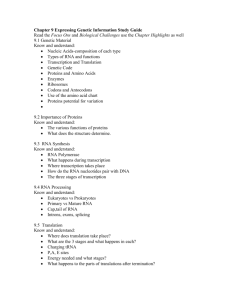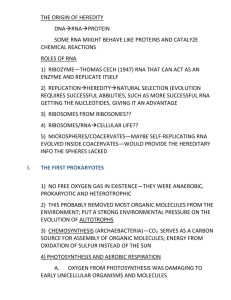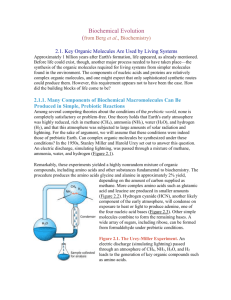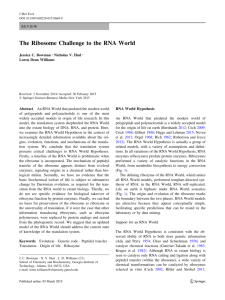CHAPTER 15
advertisement
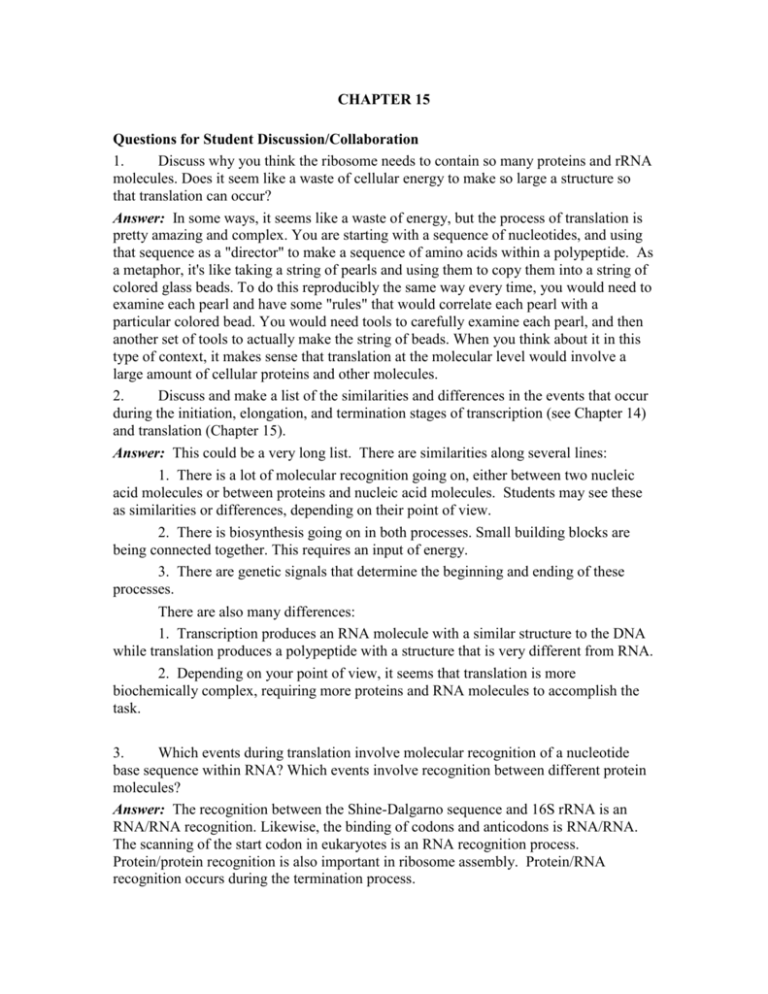
CHAPTER 15 Questions for Student Discussion/Collaboration 1. Discuss why you think the ribosome needs to contain so many proteins and rRNA molecules. Does it seem like a waste of cellular energy to make so large a structure so that translation can occur? Answer: In some ways, it seems like a waste of energy, but the process of translation is pretty amazing and complex. You are starting with a sequence of nucleotides, and using that sequence as a "director" to make a sequence of amino acids within a polypeptide. As a metaphor, it's like taking a string of pearls and using them to copy them into a string of colored glass beads. To do this reproducibly the same way every time, you would need to examine each pearl and have some "rules" that would correlate each pearl with a particular colored bead. You would need tools to carefully examine each pearl, and then another set of tools to actually make the string of beads. When you think about it in this type of context, it makes sense that translation at the molecular level would involve a large amount of cellular proteins and other molecules. 2. Discuss and make a list of the similarities and differences in the events that occur during the initiation, elongation, and termination stages of transcription (see Chapter 14) and translation (Chapter 15). Answer: This could be a very long list. There are similarities along several lines: 1. There is a lot of molecular recognition going on, either between two nucleic acid molecules or between proteins and nucleic acid molecules. Students may see these as similarities or differences, depending on their point of view. 2. There is biosynthesis going on in both processes. Small building blocks are being connected together. This requires an input of energy. 3. There are genetic signals that determine the beginning and ending of these processes. There are also many differences: 1. Transcription produces an RNA molecule with a similar structure to the DNA while translation produces a polypeptide with a structure that is very different from RNA. 2. Depending on your point of view, it seems that translation is more biochemically complex, requiring more proteins and RNA molecules to accomplish the task. 3. Which events during translation involve molecular recognition of a nucleotide base sequence within RNA? Which events involve recognition between different protein molecules? Answer: The recognition between the Shine-Dalgarno sequence and 16S rRNA is an RNA/RNA recognition. Likewise, the binding of codons and anticodons is RNA/RNA. The scanning of the start codon in eukaryotes is an RNA recognition process. Protein/protein recognition is also important in ribosome assembly. Protein/RNA recognition occurs during the termination process.
